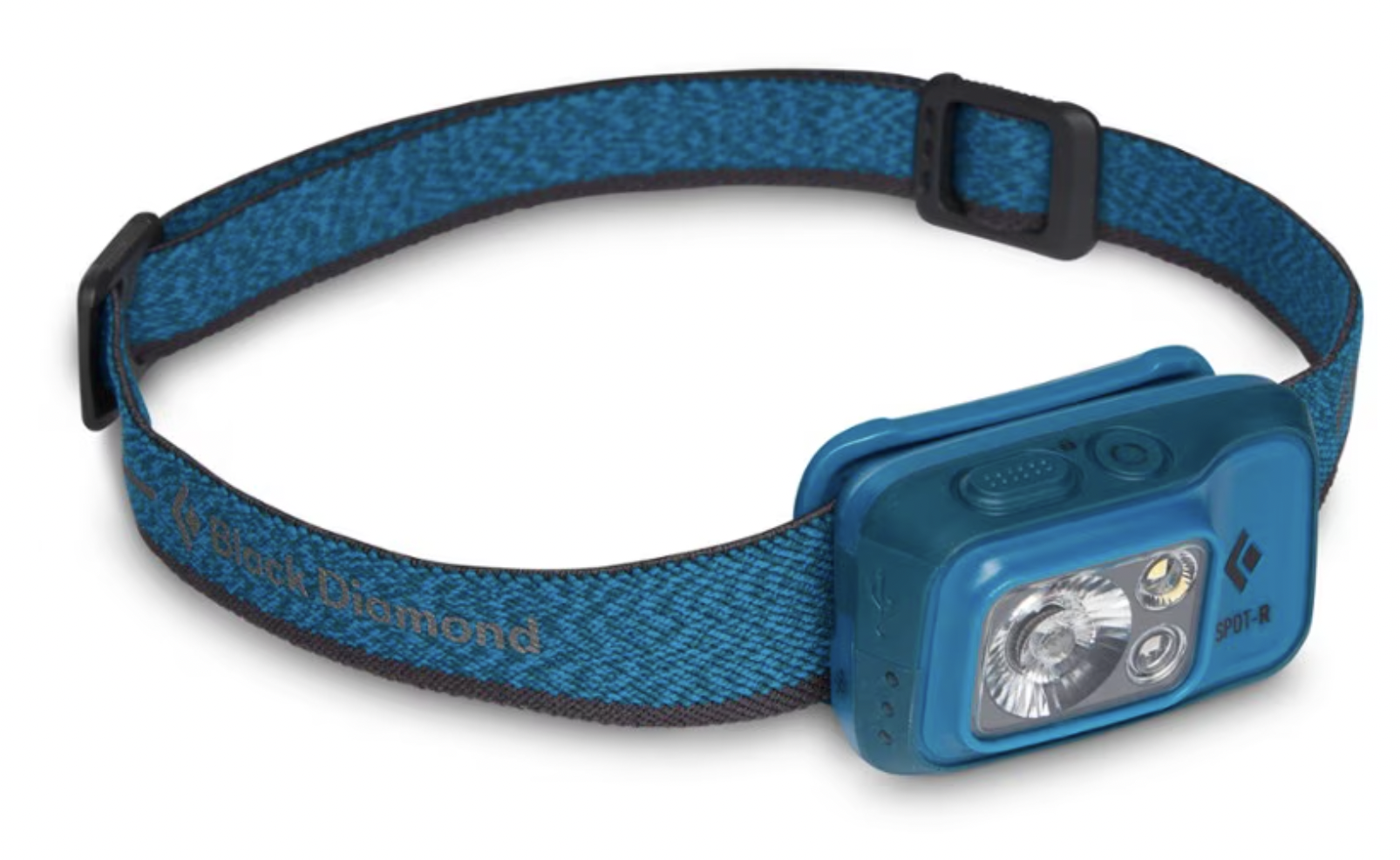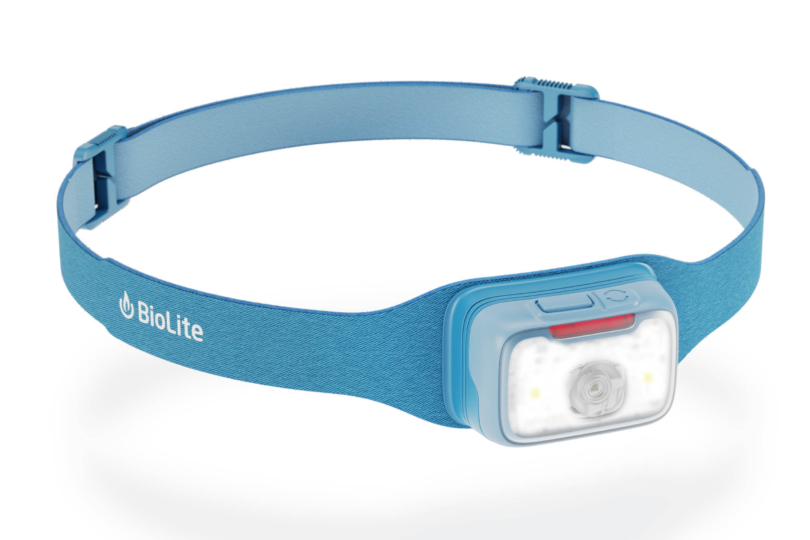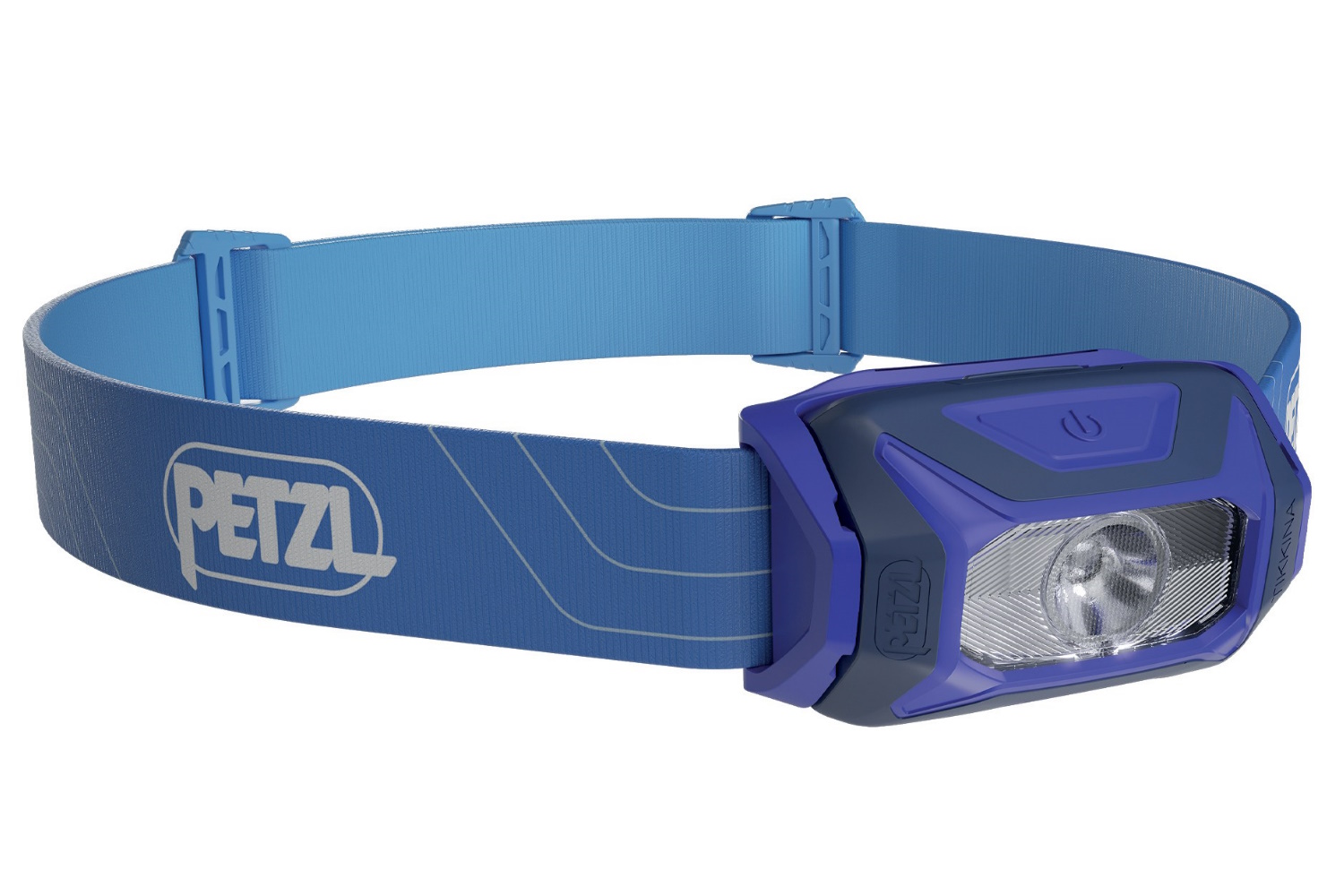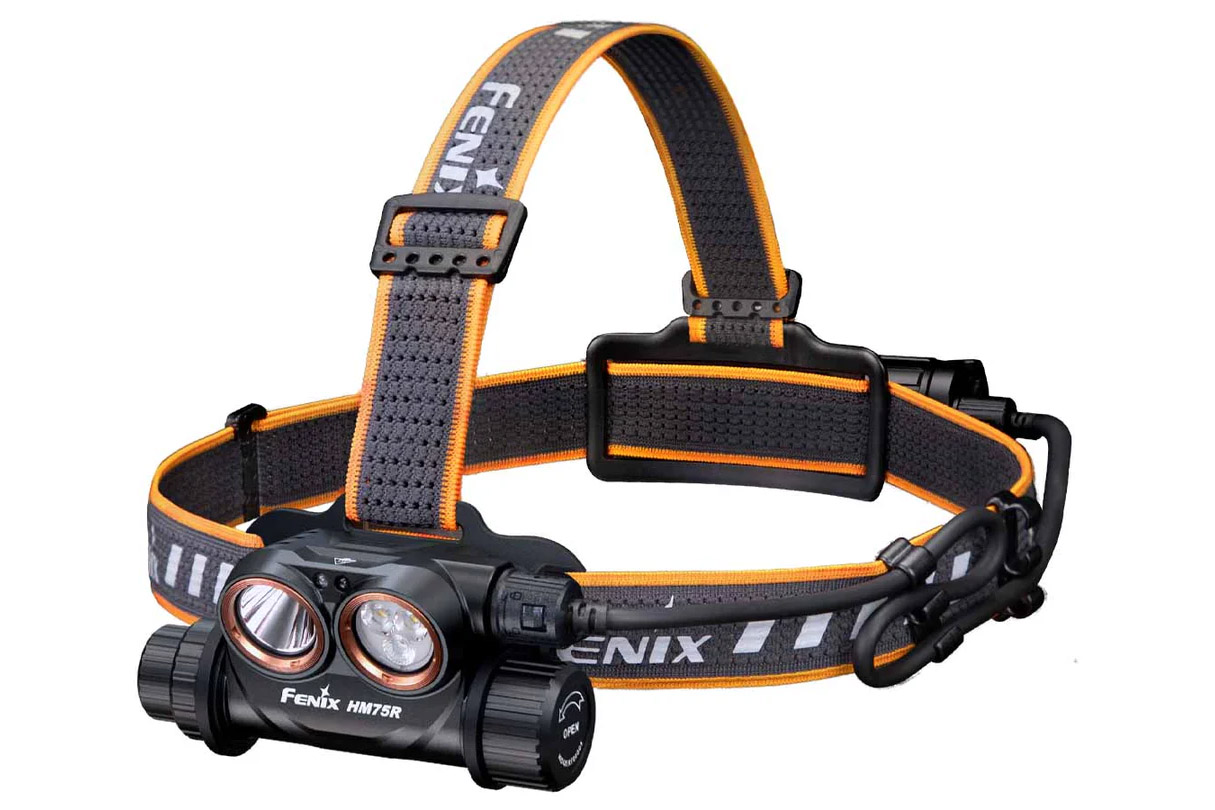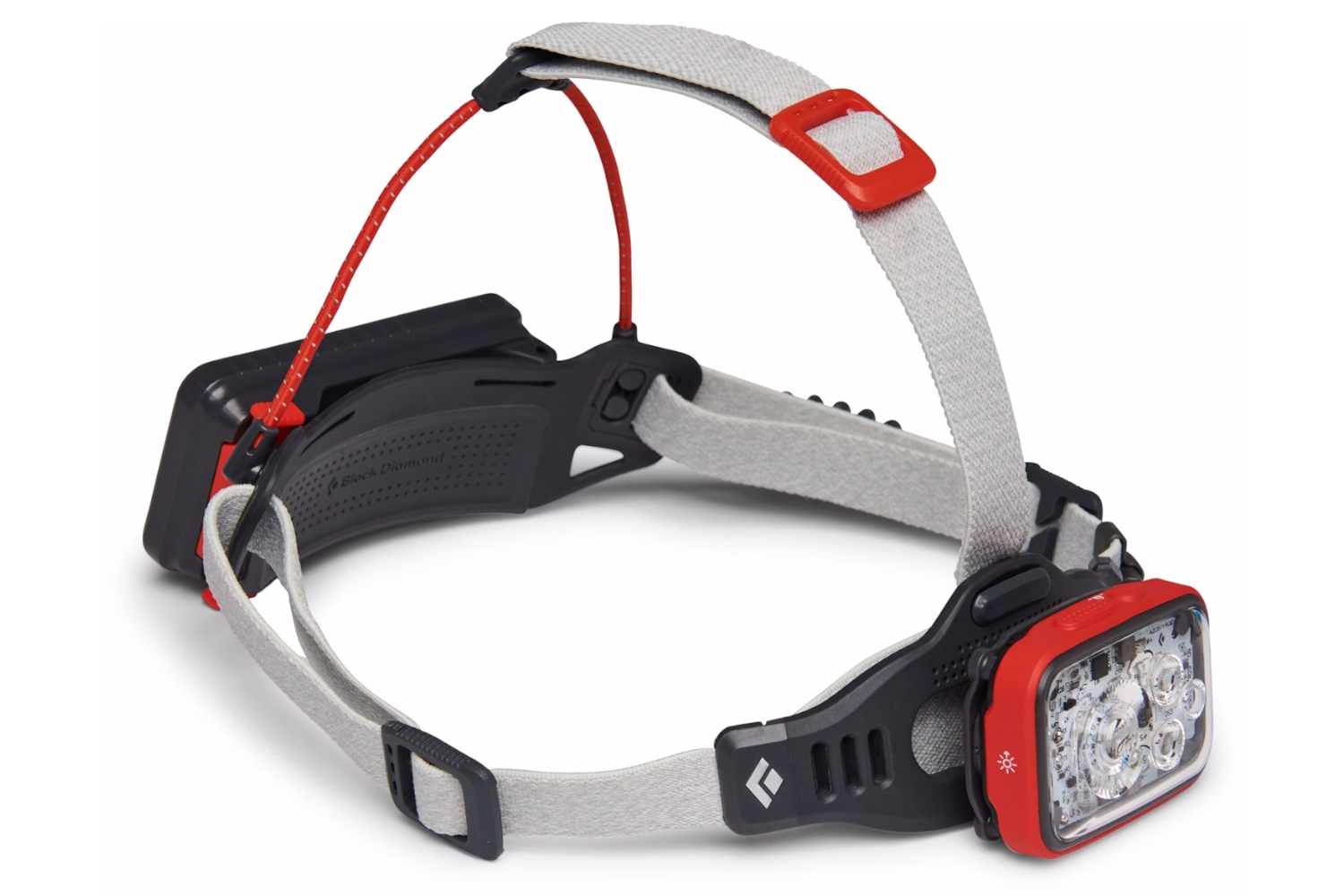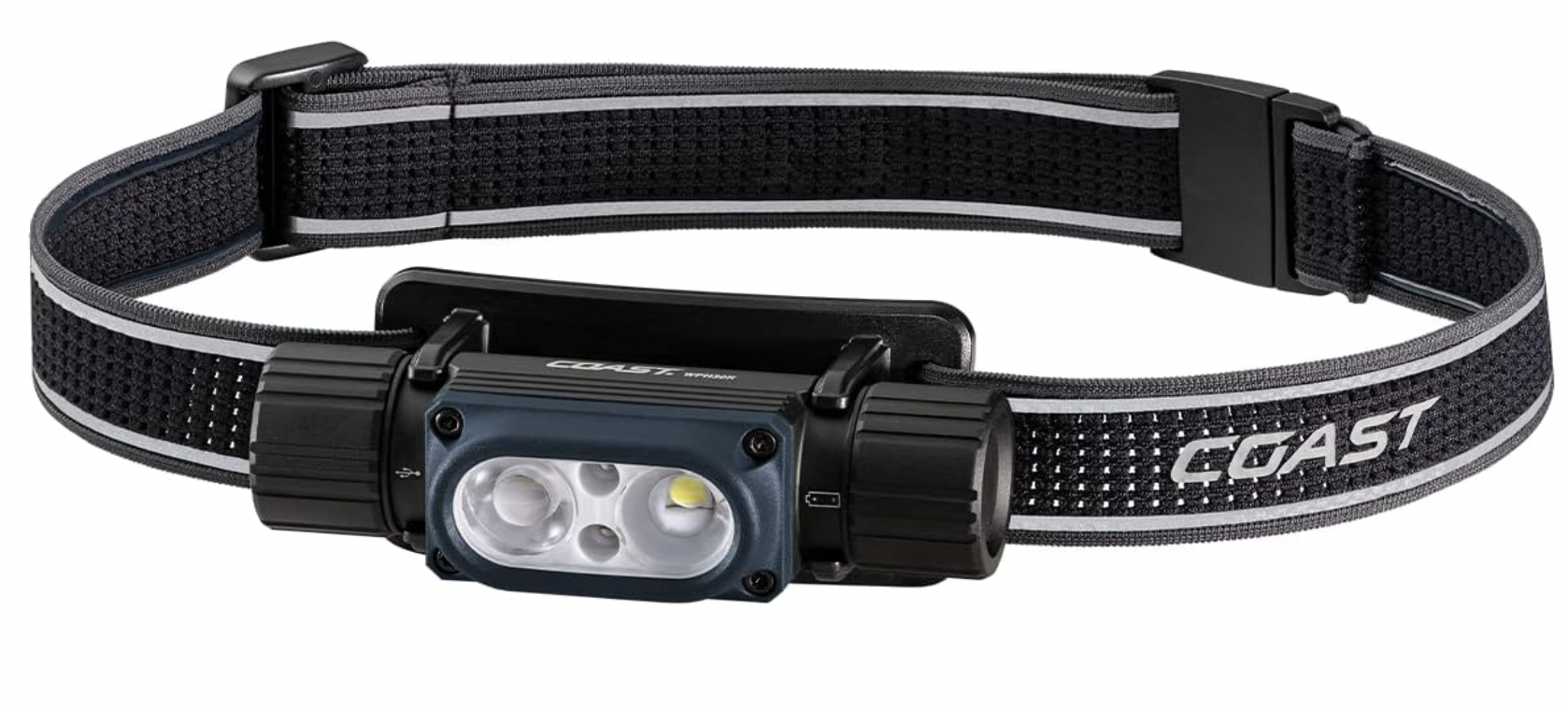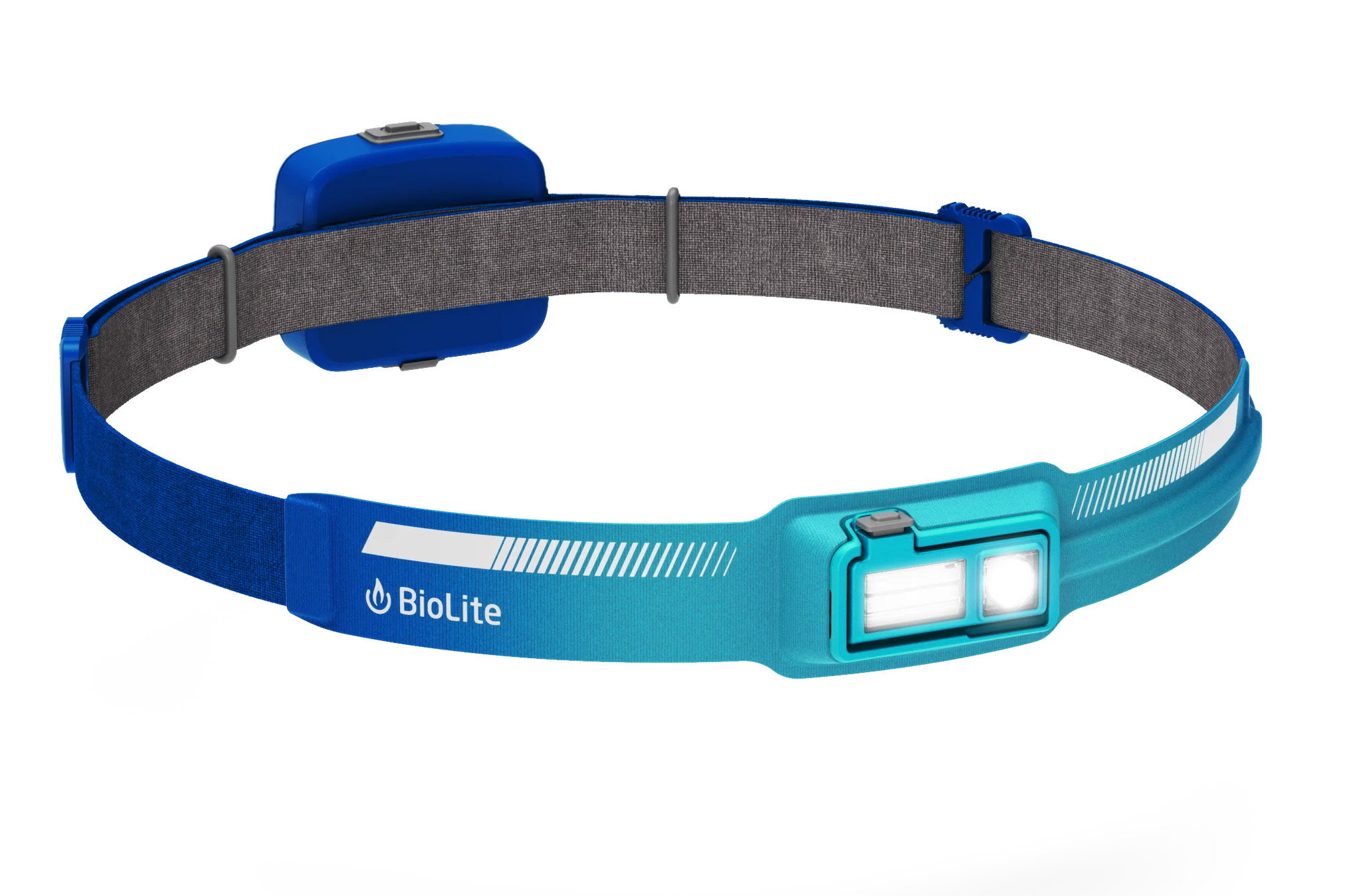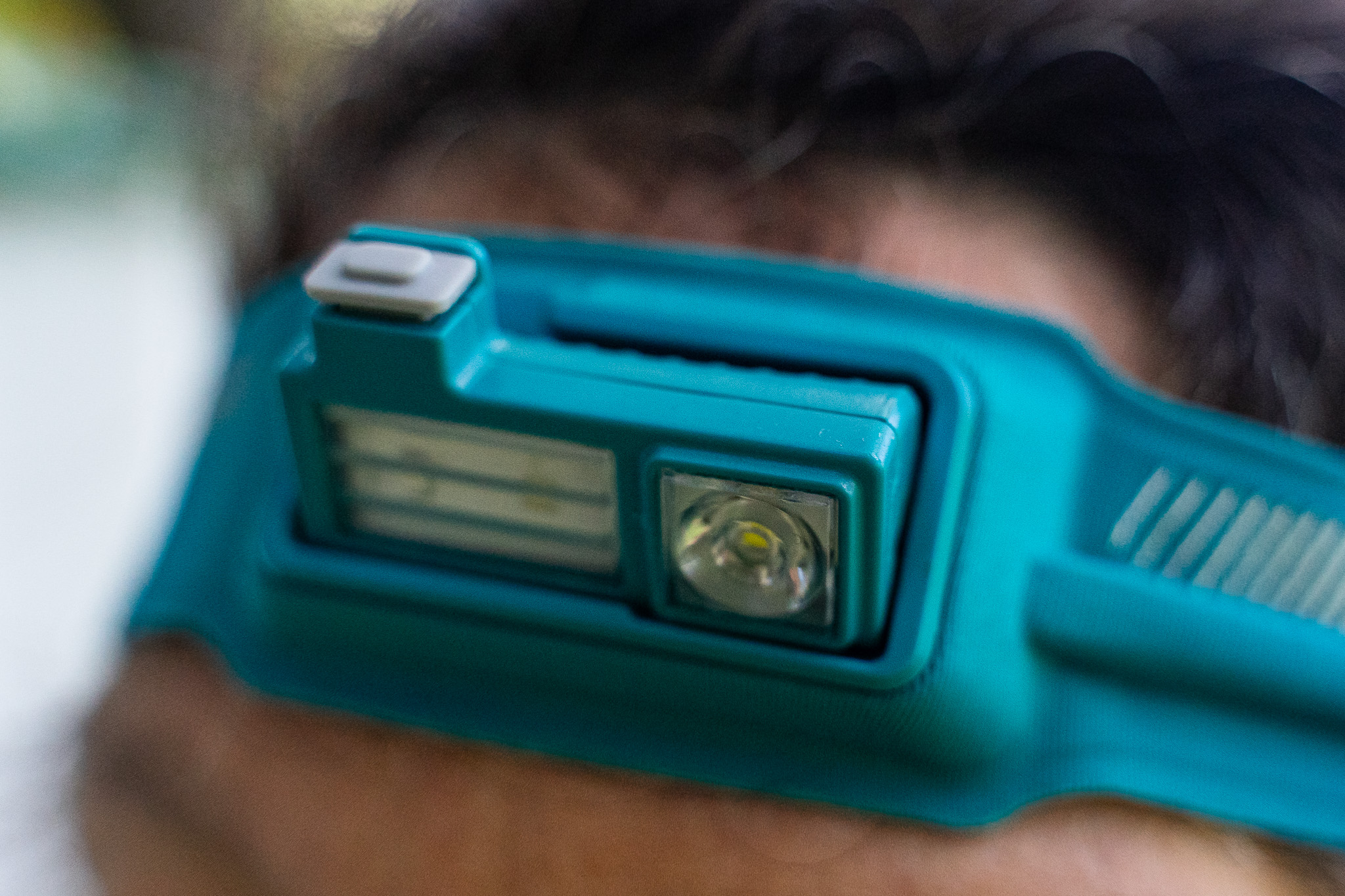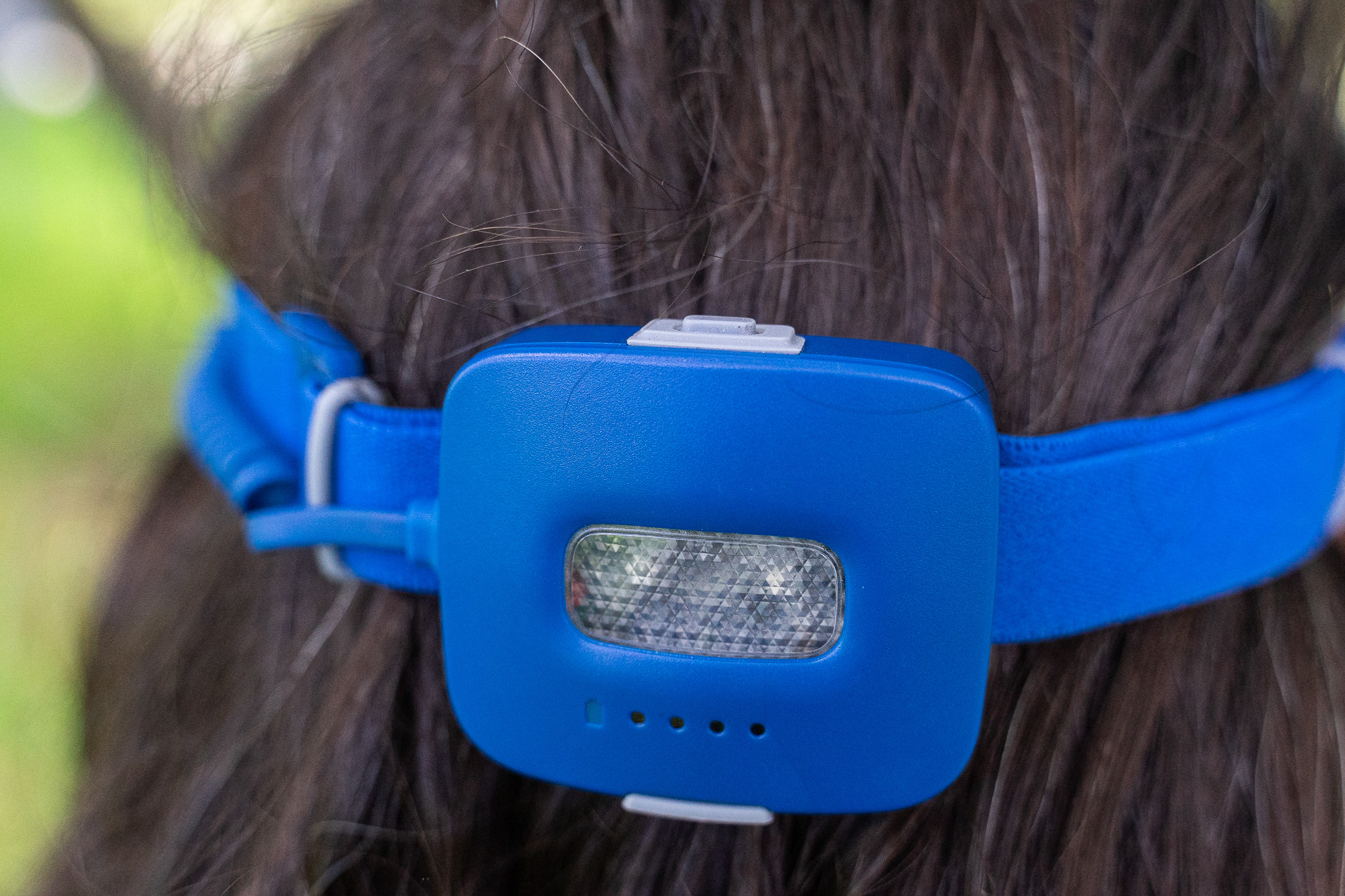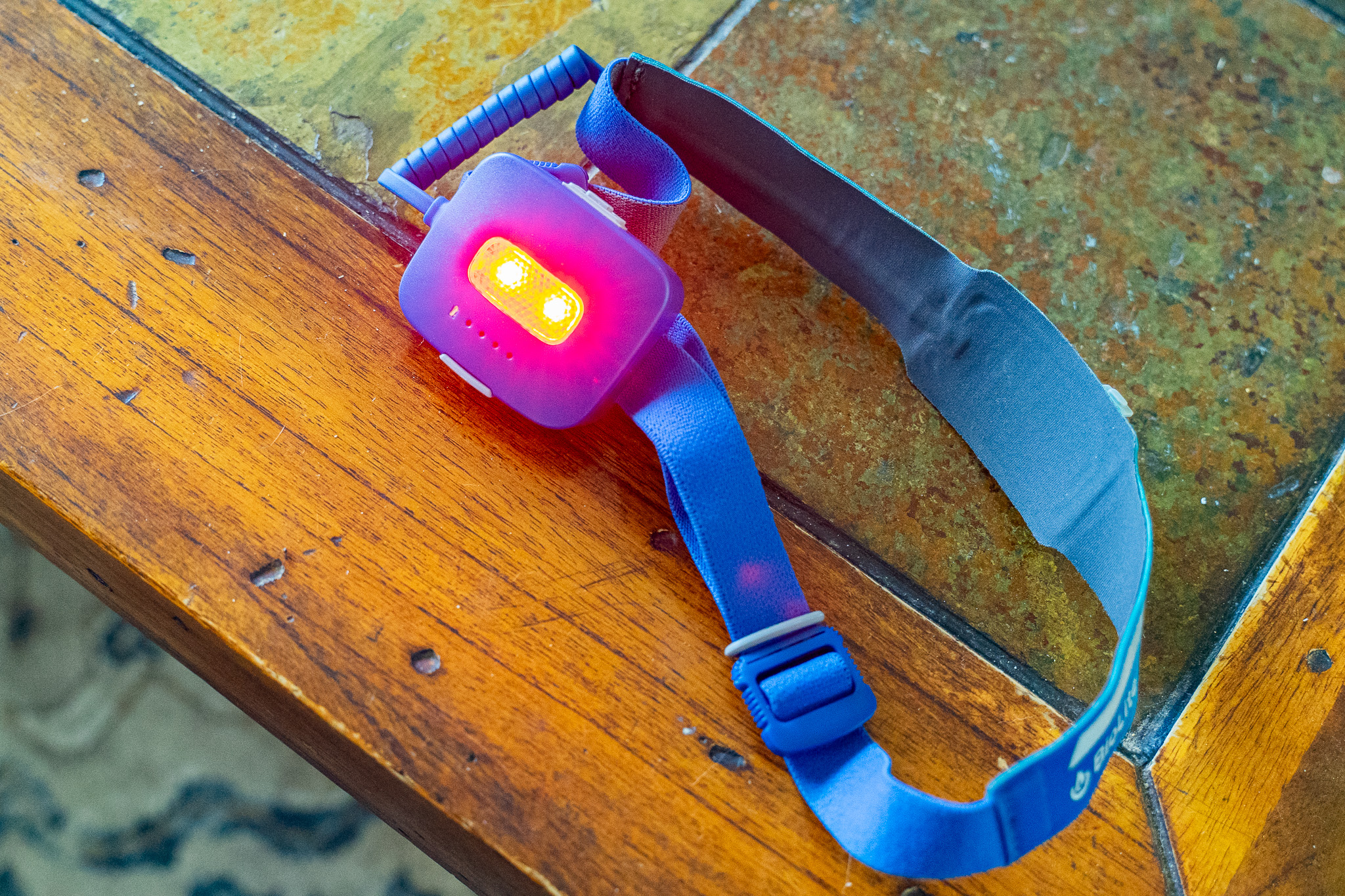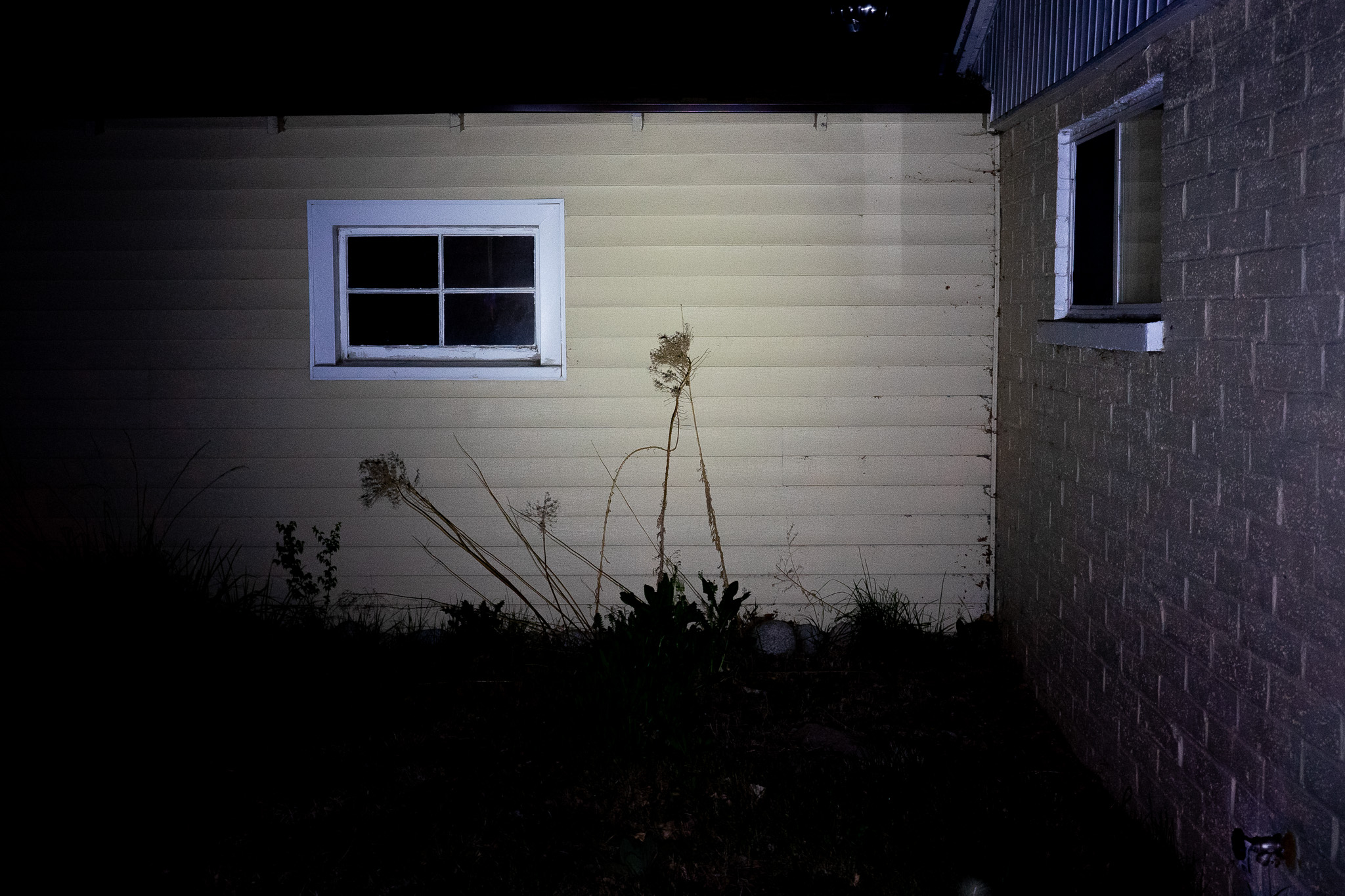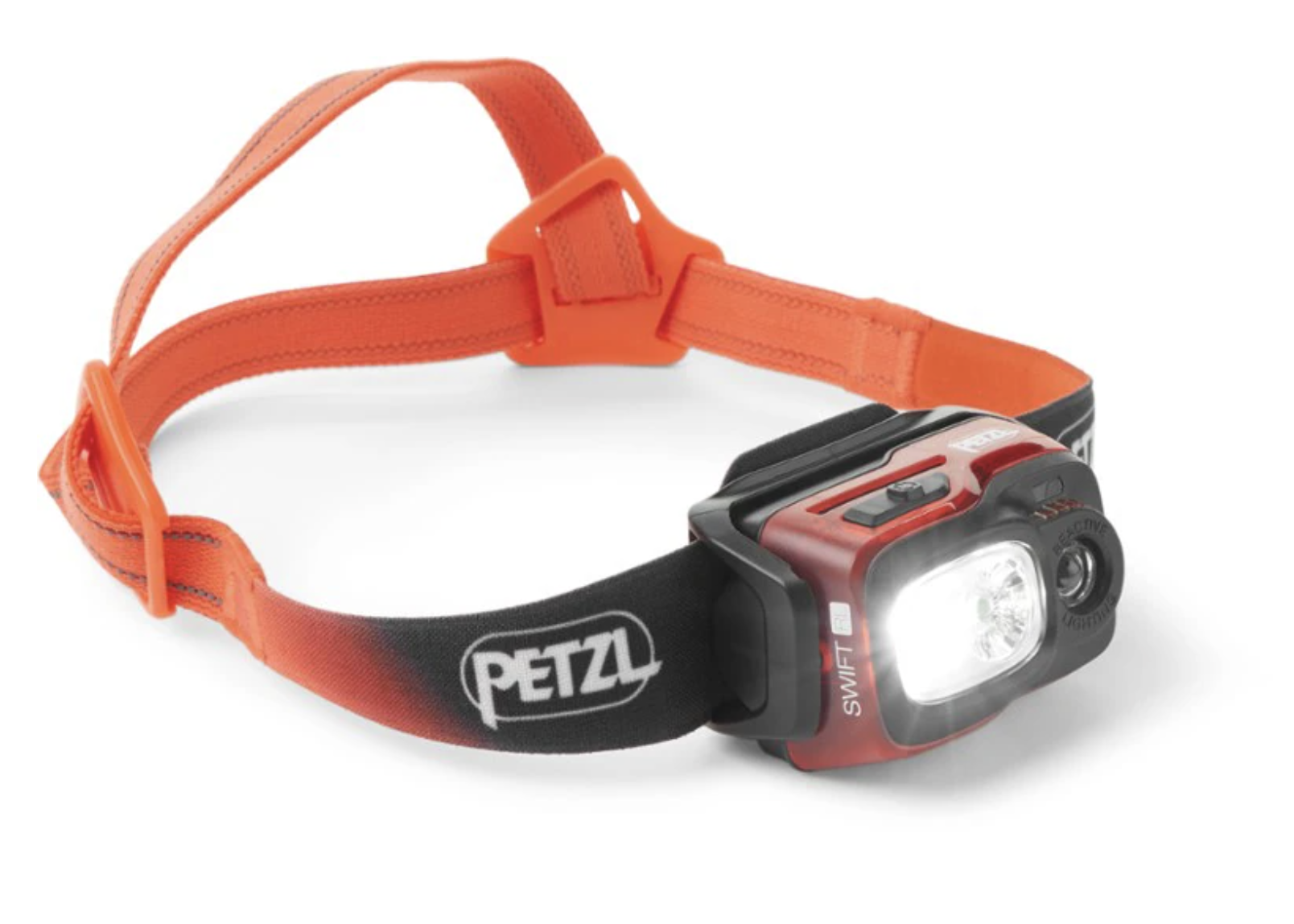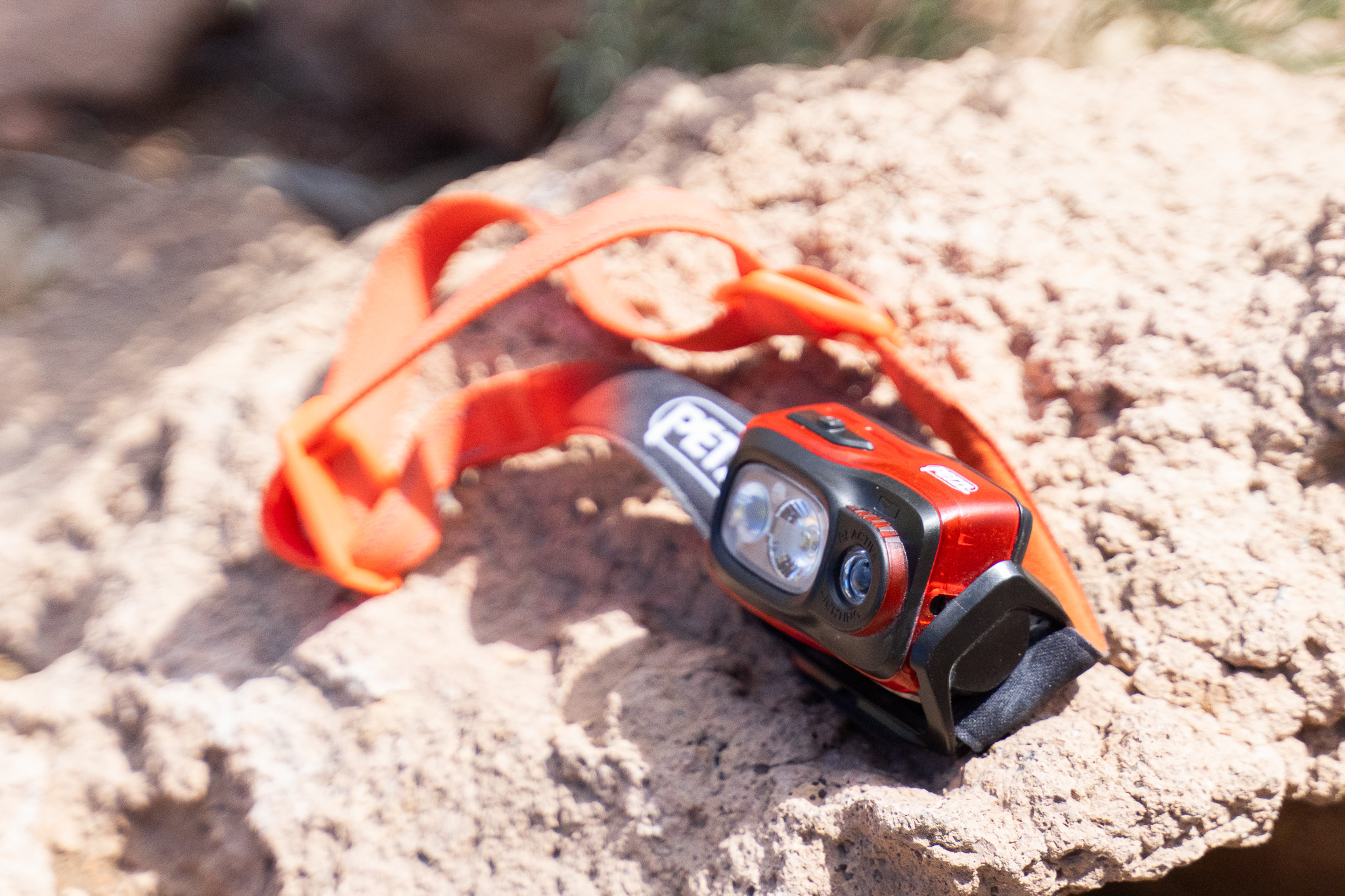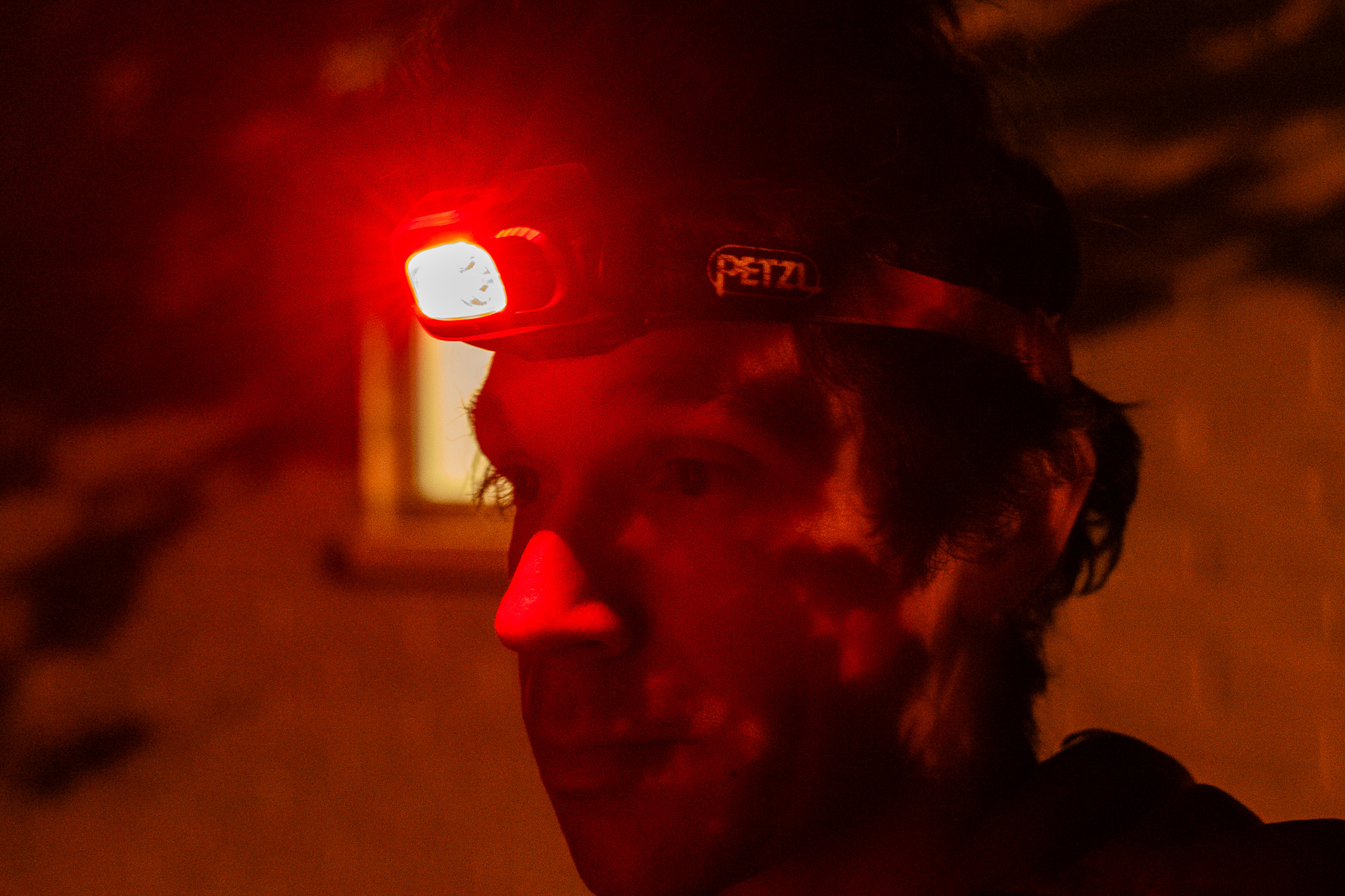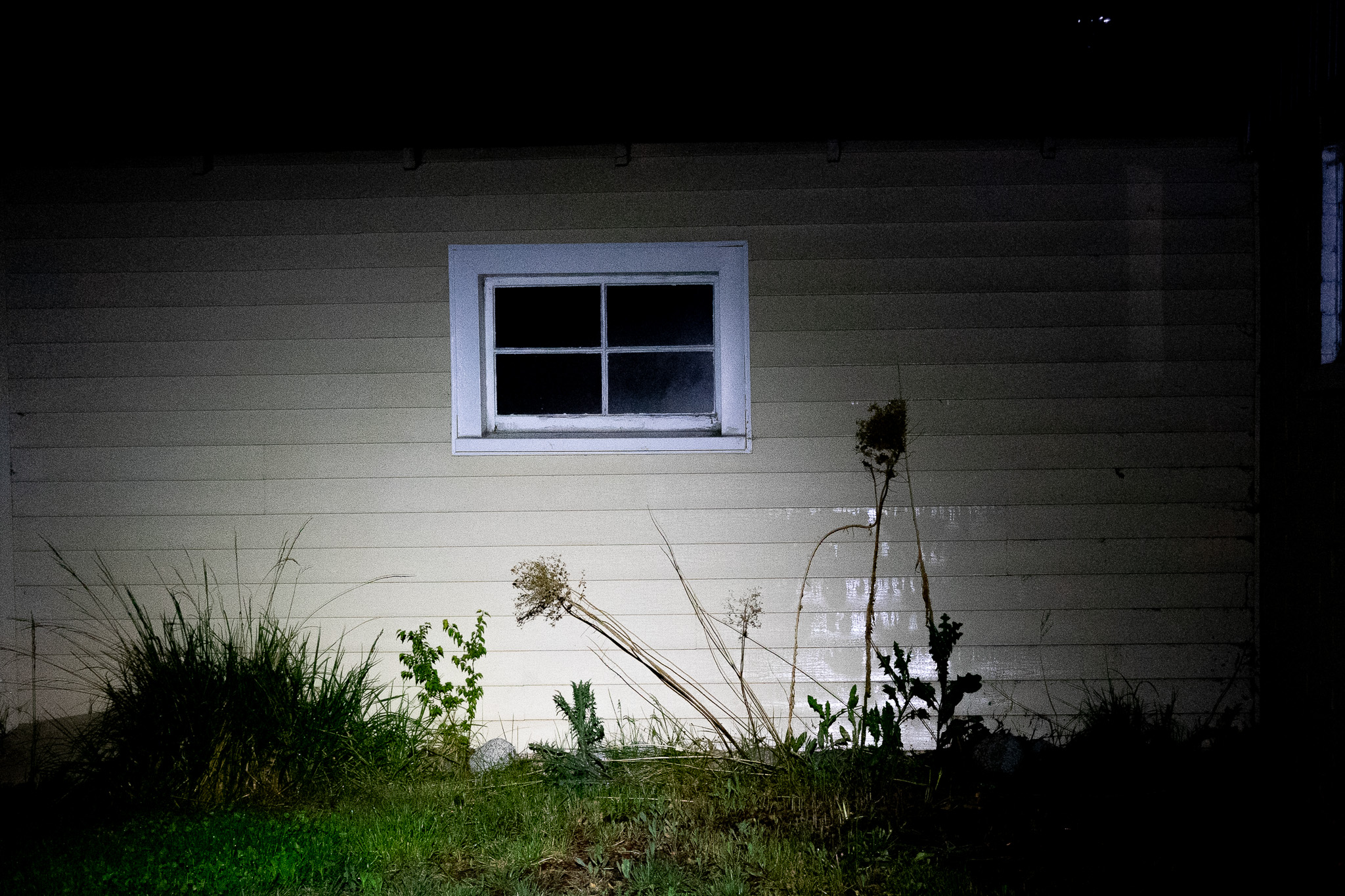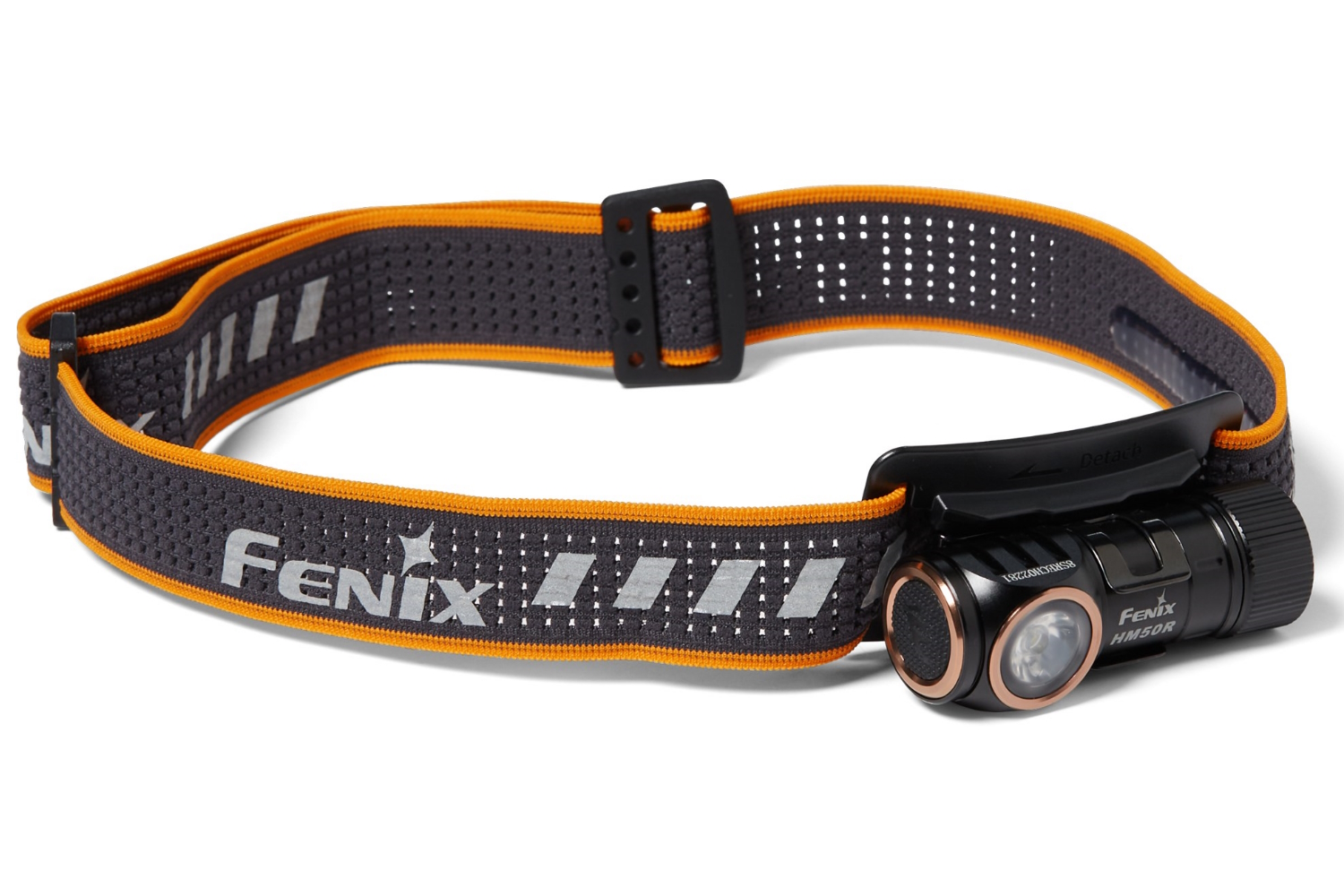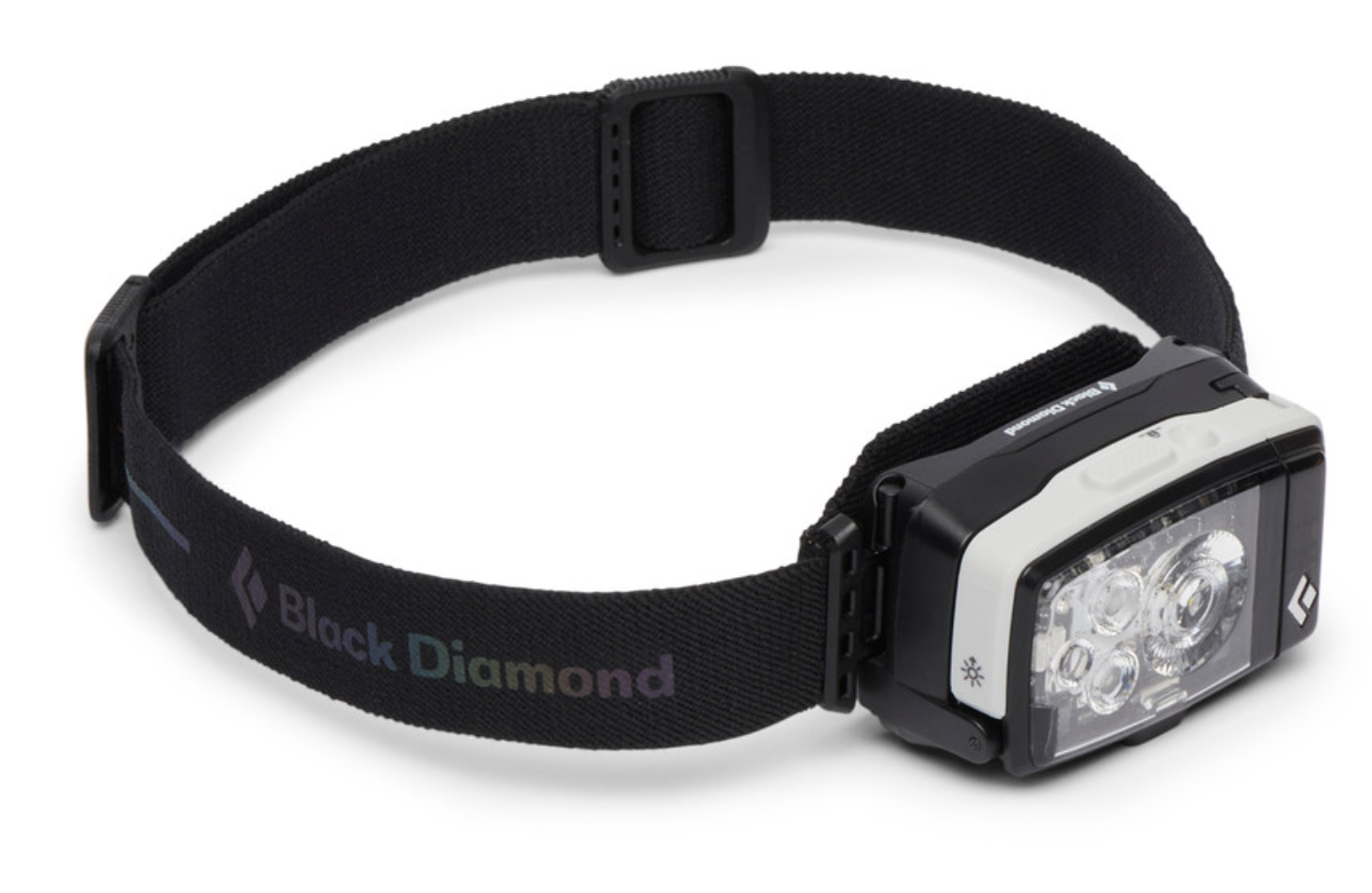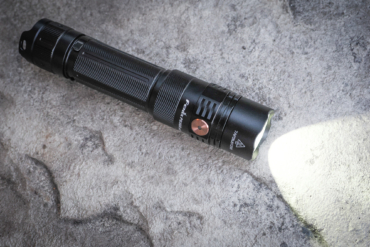Whether you’re navigating a trail for a 4 a.m. alpine start, cooking at a backcountry campsite, or fixing a flat tire in the dark, a good headlamp is one of the most valuable pieces of outdoor gear you can own. Hands-free lighting boosts convenience and in some situatoins is essential for safety.
But with hundreds of models on the market — ranging from $25 budget lights to professional-grade units costing $200 or more — choosing the right one can be daunting. That’s why a team of testers and I tried out the latest and best headlamps in real-world conditions, then backed that up with lab-style measurements.
Don’t have time to read this whole article and just want a great headlamp at a reasonable price? Just get the Black Diamond Spot 400-R. It’s the most well-rounded headlamp and should function well in almost any use case. It’s been GearJunkie’s top choice for more than two years.
Disclosure: GearJunkie may earn affiliate revenue from product links, but our editorial team makes selections and awards independently and will link to products regardless of affiliate relationships. Many brands provide headlamps for testing, but no brand pays for placement in this guide. GearJunkie never accepts payment for positive reviews or guide placements.
Editor’s Note: I updated this guide on Oct. 1, 2025, adding the excellent new BioLite Range 500. Comfortable, fast-charging, and bright, it’s a close second to our all-time winner, the Spot 400-R.
The Best Headlamps of 2025
Black Diamond Spot 400-R
-
Battery life & charging
8.5
-
Beam quality & brightness
9.3
-
Durability
9.6
-
User interface & comfort
9.0
- Lumen output: 400 lumens; spotlight to 100 m
- Rechargeable: Yes, micro-USB
- Burn time: 225 hrs. on low; 4 hrs. on high
- Weight: 2.6 oz.
- Red light: Yes
- Waterproof rating: IP67 (submersible)
Pros
- Intuitive user interface
- Long battery life
- Lightweight
Cons
- 400-lumen max output is sufficient, but not the brightest
BioLite Range 500
-
Battery life & charging
8.8
-
Beam quallity & brightness
9.2
-
Durability
9.5
-
User interface & comfort
9.1
- Lumen output: 500 lumens; spotlight to 100 m
- Rechargeable: Yes, USB-C
- Burn time: 200 hrs. on low; 6 hrs. on high (regulated)
- Weight: 2.6 oz.
- Red light: Yes, adjustable
- Waterproof rating: IP67 submersible
Pros
- Supremely comfortable
- Versatile lighting
- Simple two-button user interface
- Fast USB-C charging
Cons
- Not bright enough for some situations
- Battery depletes fast at higher outputs
Petzl Tikkina
-
Battery life & charging
5.0
-
Beam quality & brightness
8.2
-
Durability
7.7
-
User interface & comfort
7.8
- Lumen output: 250 lumens, 10-60 m
- Rechargeable: No; 3 AAA batteries needed
- Weight: 3 oz.
- Burn time: 120 hrs. on low; 2 hrs. max power
- Red light: No
Pros
- Affordable
- Lightweight
- Good runtime for the price
Cons
- Doesn't come with a rechargeable battery
Petzl Bindi Ultralight Headlamp
-
Battery life & charging
5.0
-
Beam quality & brightness
7.0
-
Durability
7.4
-
User interface & comfort
9.0
- Lumen output: 6-200 lumens
- Rechargeable: Yes, micro-USB
- Weight: 1.2 oz.
- Burn time: 50 hrs. on low; 2 hrs. max power
- Red light: Yes
Pros
- Extremely Lightweight
- Easily adjustable fit
- Good value
Cons
- Low runtime
- Low output
Fenix HM75R Rechargeable Headlamp
- Lumen output: 1,600 lumens, 223 meter range
- Rechargeable: Yes, USB-C
- Burn time: 234 hours (low), 10 hours 30 minutes (high)
- Weight: 11.32 ounces including external battery pack
- Red light: Yes, three power modes
- Waterproof rating: Yes, IP68 rated
Pros
- Very powerful
- Warm color floodlight (good for blood trailing)
- Multiple red light power settings, including 52-foot range high mode
- External battery pack can power devices
Cons
- Heavy, large
- Expensive
Black Diamond Distance 1500 Headlamp
-
Battery life & charging
8.6
-
Beam quality & brightness
9.0
-
Durability
8.8
-
User interface & comfort
8.8
- Lumen output: Up to 1,500 lumens
- Rechargeable: Yes, via USB-C or micro-USB
- Burn time: 40 hours on low
- Weight: 7.5 oz.
- Red light: Yes
- Rear light: Yes
- Waterproof rating: IP67
Pros
- Super Bright
- Long battery life
- Ability to swap out for fresh batteries
- Comfortable
Cons
- Relatively heavy
- Expensive
Coast WPH30R
-
Battery life & charging
8.7
-
Beam quality & brightness
9.0
-
Durability
9.8
-
User interface & comfort
8.6
- Lumen output: 1,000 (high), 400 (flood)
- Rechargeable: Yes, USB-C
- Burn time: 23 hrs. on flood low; 5 hrs. on spot
- Weight: 5.60 oz.
- Red light: Yes
- Waterproof rating: IP68 (submersible)
Pros
- Very durable; IP68 Submersible
- Long 149 meter beam throw
- Good runtime
- Great user interface, compatible with gloves
Cons
- Heavy
- Just 5 modes, fewer than many lights
More Great Headlamps, Field-Tested
The following headlamps didn’t make the top of our list, but don’t write them off just yet. Below, you’ll find a lighter version of the BD Distance 1500, a wild and high-tech option from Ledlenser ideal for serious use such as spelunking, and a powerful version of our top pick, the Black Diamond Spot 400-r.
- Lumen output: 450 lumens; spotlight to 90 m
- Rechargeable: Yes, micro-USB
- Burn time: 60 hrs. on low; 3 hrs. on high
- Weight: 2.75 oz.
- Red light: Yes, front and rear flashing
- Waterproof rating: IPX4
Pros
- Soft and comfortable
- Wonderfully balanced, no bounce during running or movement
- Even lighting with plenty of power
- Rear light for traffic safety
Cons
- Spotlight is lacking
- Small button hard to use with gloves
- Lumen output: 1,100 lumens on high reactive setting
- Rechargeable: Yes, micro-USB
- Burn time: 7 hours on Medium reactive setting
- Weight: 3.5 oz.
- Red light: Yes
- Waterproof rating: IPX4
Pros
- Bright
- One-button functionality
- Very comfortable strap system
- Reactive lighting extends battery life
Cons
- Lock button is easy to unlock
- Lumen output: 700 lumens
- Rechargeable: Yes
- Weight: 2.5 oz.
- Burn time: 42 hrs. (claimed) on low, 3 hrs. on high
- Red light: Yes
Pros
- Simple user interface
- Impressive color rendering
Cons
- Not the longest runtime
- Lumen output: Up to 1,100 lumens
- Rechargeable: Yes, via USB-C
- Burn time: 120 hours on low, 4.25 hours on high
- Weight: 3.8 oz.
- Red light: Yes
- Rear light: No
- Waterproof rating: IP67
Pros
- Lightweight
- Very stable
- Batteries are rechargeable and swappable
- Light can completely detach from battery for storage
- Very powerful for its size
Cons
- Power tap feature difficult to use with gloves on
- Expensive
- Lumen output: 500 lumens, 12-120 m
- Rechargeable: Yes, lithium-ion with micro-USB
- Weight: 3.5 oz.
- Burn time: 350 hrs. on low; 7 hrs. on high
- Red light: Yes
- Waterproof Rating: IP67
Pros
- Blue, green, and red light options
- Effective waterproofing
- Comfortable
Cons
- Lower total duration burn time
Best Headlamp Comparison Chart
| Headlamp | Price | Max Lumen Output | Rechargeable | Max Burn Time | Weight | Waterproof Rating |
| Black Diamond Spot 400-R | $70 | 400 lm | Yes | 225 hrs. on low; 4 hrs. on high | 2.6 oz. | IP67 |
| BioLite Range 500 | $70 | 500 lm | Yes | 200 hrs. on low; 6 hrs. on high | 2.6 oz. | IP67 |
| Petzl Tikkina | $20 | 250 lm | No | 120 hrs. | 2.8 oz. | IPX4 |
| Petzl Bindi | $44 | 200 lm | Yes | 50 hrs. | 2.1 oz. | IPX4 |
| Fenix HM75R | $220 | 1,600 lm | Yes | 234 hours on low, 10 hours 30 minutes on high | 11.3 oz. | IP68 |
| Black Diamond Distance 1500 | $200 | 1,500 lm | Yes | 40 hrs. | 7.5 oz. | IP67 |
| Fenix HM 50R V2 | $60 | 700 lm | Yes | 42 hrs. | 2.75 oz. | IP68 |
| Coast WPH30R | $70 | 1,000 lm | Yes | 23 hrs. on flood low; 5 hrs. on spot | 2.6 oz | IP68 |
| BioLite Dash 450 | $60 | 450 lm | Yes | 60 hours on low, 3 hours on high | 1.75 oz | IPX4 |
| Petzl Swift RL | $130 | 1,100 lm | Yes | 7 hours on Medium reactive setting | 3.5 oz. | IPX4 |
| Distance LT 1100 | $120 | 1100 lm | Yes | 120 hrs on low, 4.25 hrs on high | 3.8 oz. | IP67 |
| Black Diamond Storm 500-R | $75 | 500 lm | Yes | 350 hrs. | 3.5 oz. | IP67 |
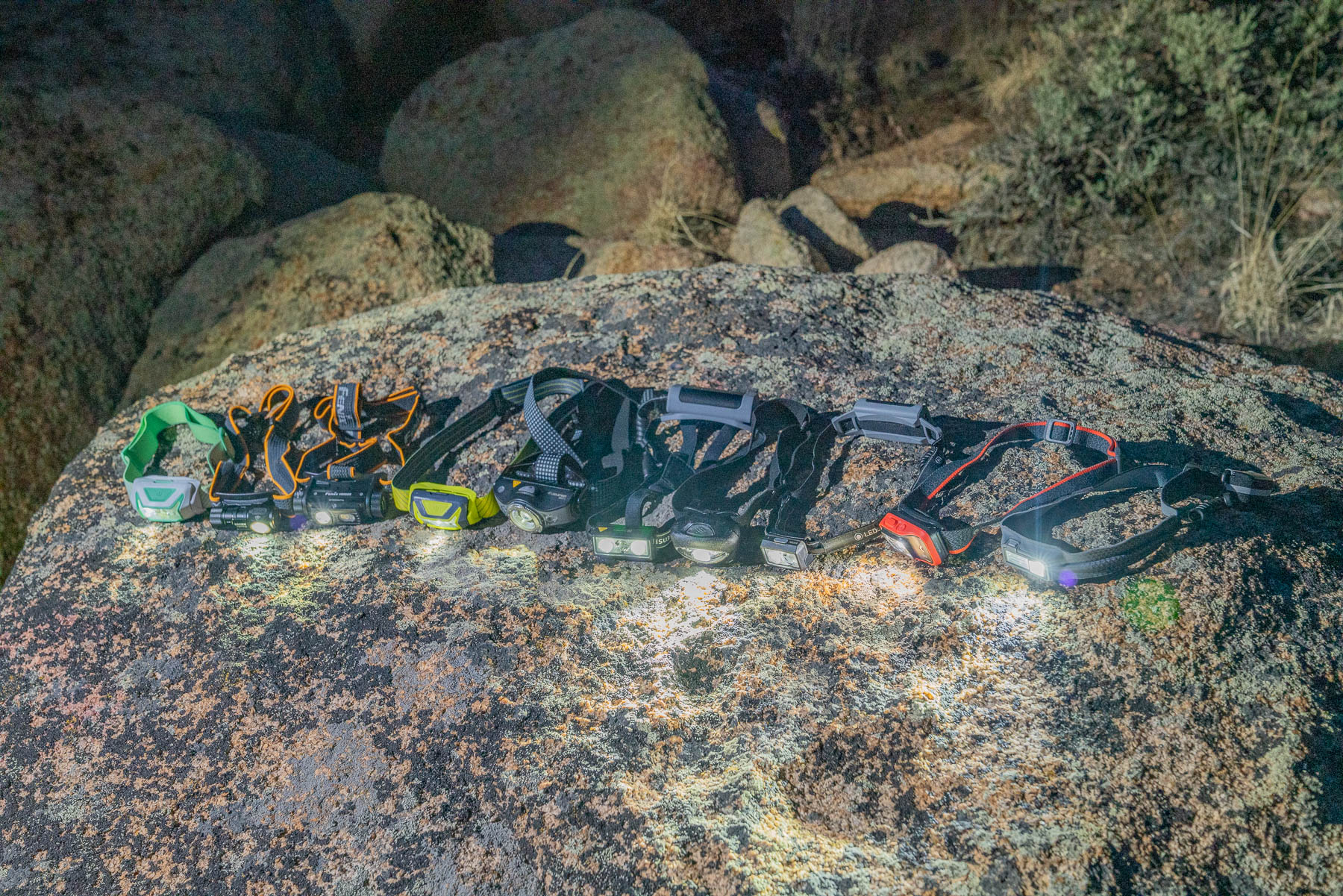
How We Tested the Best Headlamps
GearJunkie uses a two-pronged approach: field use and controlled measurement.
- Field testing: We take headlamps on hikes, ultramarathons, climbing trips, hunting blinds, and simple backyard campouts. Testers range from ultrarunners to gear novices, so we capture broad perspectives.
- Lab testing: We dunk lamps in water, freeze them overnight, and drop them from shoulder height to simulate real-world abuse.
- Battery performance: We test run times in controlled environments, examine recharge cycles, and check compatibility with USB-C or proprietary charging systems.
- Usability checks: Can you switch modes with gloves on? Does the lamp remember your last setting? Is the interface intuitive or frustrating?
- Scoring rubric: We weight our evaluation as follows:
- Battery life & charging: 25%
- Beam quality & brightness: 25%
- Durability: 25%
- User interface & Comfort: 25%
Field Testing History & Guide Background
The GearJunkie team has tested a huge variety of headlamps for countless miles in the woods and at campsites, from hunting to climbing peaks. Since 2013, we’ve tested approximately 200 headlamps across our team of editors. We polled our crew to determine their absolute favorite headlamps and why. Author and hunt and fish editor Nicole Qualtieri first published this guide in early 2021, and the selection included 9 of the best headlamps available online.
Since then, we’ve refined this guide and kept it updated by testing the latest models. Our list has grown to include 11 models, representing a diversity of manufacturers, from Black Diamond to Fenix.
Additionally, GearJunkie Editor Sean McCoy now contributes most of the testing and hands-on evaluation. Sean is a hunter, skier, runner, and all-around outdoorsman with over 20 years of experience putting gear through the ringer. For headlamps, Sean brings each model on long runs that stretch well past sundown and uses them at hunt camp. There, they are put to the test in cold conditions, and Sean can evaluate the user interface (the buttons) through a thick pair of gloves.
McCoy bench-tested these headlamps in measurable testing. He charged them and then let them run on “high” mode to see how they measured up to their claimed run times. He also compared the color rendering, throw distance, and other qualities of the light the lamps produced.
We’ve also tested many models in a group setting where we can make side-by-side comparisons of brightness and beam length. Our team has used these headlamps for spelunking, backcountry skiing, mountain biking, and running ultramarathons. We’ve also used these headlamps at home — pulling gear out of the crawlspace, unloading the rig post-road trip, and shoveling snow. The utility of a dependable headlamp is prolific.
Some of our editors have used their choice headlamp for many years across every season with no sign of deterioration or a desire to switch. Beyond our team’s experience, we also considered the most popular, most durable, and bestselling headlamps on the market, as well as a broad range of price points and features.
For more lighting options, check out our guide to the best headlamps for hunting. If you’re looking to up your game in camp, have a look at the best camping lanterns and string lights.
Buyer’s Guide: How to Choose the Best Headlamp
Headlamp Bulbs: LEDs
Long gone are the days of light bulbs. Modern headlamps almost universally use LEDs (light-emitting diodes). These small, powerful light sources use a tiny fraction of the energy of bulbs. Today, thanks to LEDs, headlamps produce incredibly bright light and run for many hours on rechargeable batteries.

But did you know that all LEDs are not created equal? Yep, LEDs are a rapidly evolving technology. And when you get a good headlamp, one component that makes a big difference is which LED the brand uses.
Some of the very best headlamps use CREE LEDs. Using premium components, manufacturers can enhance headlamp power and light qualities like color rendering and warmth. So, when you spend a little more on a quality headlamp, this is just one of the reasons.

Color Options
The standard LED color is white (we’ll go into some variations on this in the Color Rendering section below). But many headlamps also have a red LED (or other colors) light.
We consider the red mode on a headlamp to be almost mandatory. That’s because red light preserves your night vision much more than white light.
So, by using a red light while cooking, around the campsite, or even while walking on a trail, you will still be able to see much more of the surrounding landscape, especially under a full moon. Red light also won’t wake up your tentmate as easily if you need to read or get dressed in the dark. And it’s the best color when hanging out with a group as it won’t blind your friends.
Some headlamps also have green and blue LED lights. Blue light is useful for night fishing and for hunters who need to spot an animal’s blood. Blue light also is a good choice for reading maps in the dark, because the tone picks up red lines on the page.
Green lights are a helpful tool for hunting at night. The color is brighter than red, provides better contrast, and won’t startle animals.
Regardless of the color options, be sure to take a little time to learn your headlamp’s user interface so you can switch between them as needed.

Lumens (Brightness)
One of the most important components of a headlamp is how much light it produces. We measure this in lumens. Most headlamps have a low, medium, high, and sometimes “turbo” brightness setting, which users can manually adjust via buttons on the headlamp.
The higher the setting, the faster the battery depletes, so Turbo settings are often short-lived and regulated to preserve battery life. Some headlamps also have a dimming option that lets you gradually adjust the brightness level.
Our favorite headlamps range from about 400 to 1,500 lumens at their highest output. For nighttime adventures like trail running or uphill skiing, opt for a headlamp with a max output of at least 400 lumens, which can spotlight obstacles and wildlife.
LEDs with higher lumens are better for faster activities or spotting far-off objects. But while higher lumens mean more energy consumption, you can always run your battery in low mode, which we recommend if you have a long time afield between recharges. High-speed activities like cycling are best with at least 1,000 lumens of available lighting, and more is better. Faster activities also require a longer beam distance, which we outline below.
Those looking for super-bright lighting can often do better with handheld flashlights. Check out our guide to the best flashlights here.
Beam Distance & Type
An increase in lumens usually helps boost the distance the light travels, but there’s not a direct correlation. For instance, the Black Diamond Spot 400-R has 400 lumens and a max output of 100 m. Other factors influence how far the illumination travels, such as the LED placement, diameter, and beam type.
Most headlamps have two types of beams. The floodlight is broadly diffused to the area closest to you. This mode conserves battery power while reaching your immediate periphery.
The spotlight is a tight, concentrated beam of light that exposes the environment farther away and with a narrower field of vision. This setting sometimes requires more battery power, and often people manually click between the floodlight and spotlight.
Some headlamps automatically adjust between the two based on the objects in front of you. The automatic mode switch also preserves the battery. Others may use reactive technology to sense how much light to project, again, preserving battery life.
The distance between each headlamp’s floodlight and the spotlight is unique. For example, the BioLite Dash 450 has an LED light of 450 lumens that reaches 90 m. The Coast FL85R is 750 lumens and extends 70-200 m — more than the length of two football fields.

Light Settings
Headlamps typically have multiple light settings that the user controls manually. Those options include a spotlight, which is the headlamp’s maximum light output and illuminates the environment farther away. A lower output setting concentrates light closer to you.
Some headlamps have a technology that automatically adjusts the low and max output based on the objects in front of you, which saves battery power. A handful of designs also have a strobe mode, which is helpful for visibility in areas with high vehicle traffic.
Battery Type
When it comes to headlamps, we’re strong believers in rechargeable battery systems. However, they do have their downsides. Over the life of a headlamp, rechargeable batteries will gradually lose their ability to hold a charge. In our experience, it takes several years of regular use for most headlamps to become unserviceable, but it is worth considering when investing in higher-end headlamps.
There are circumstances where replaceable AAA or AA batteries make the most sense. For example, those running overnight ultramarathons may want to carry an extra set of batteries so they can quickly switch them without having to wait for a headlamp to recharge.
But for most users, a rechargeable battery is reliable, functional, and much more efficient and environmentally friendly. Not only do they produce less waste, but they also require much less energy to produce than disposable batteries and can run for up to 3,000 cycles without losing effectiveness.
You’ll see some headlamps offer both rechargeable batteries and the option for AAA battery functions. These are a great option for folks who want to be sustainable but also might need to rely on the speed of a conventional battery every once in a while.
Here’s a breakdown of common options:
- AA/AAA: Cheap and swappable anywhere, but expensive over time as they require replacement.
- Rechargeable Li-ion: Lighter, greener, longer lasting. Some require proprietary cables, which we penalize in this guide.
- 18650/21700 cells: These high-end rechargables are excellent and are found in a few headlamps. They tend to weigh more, but they are replaceable and swappable on the go.
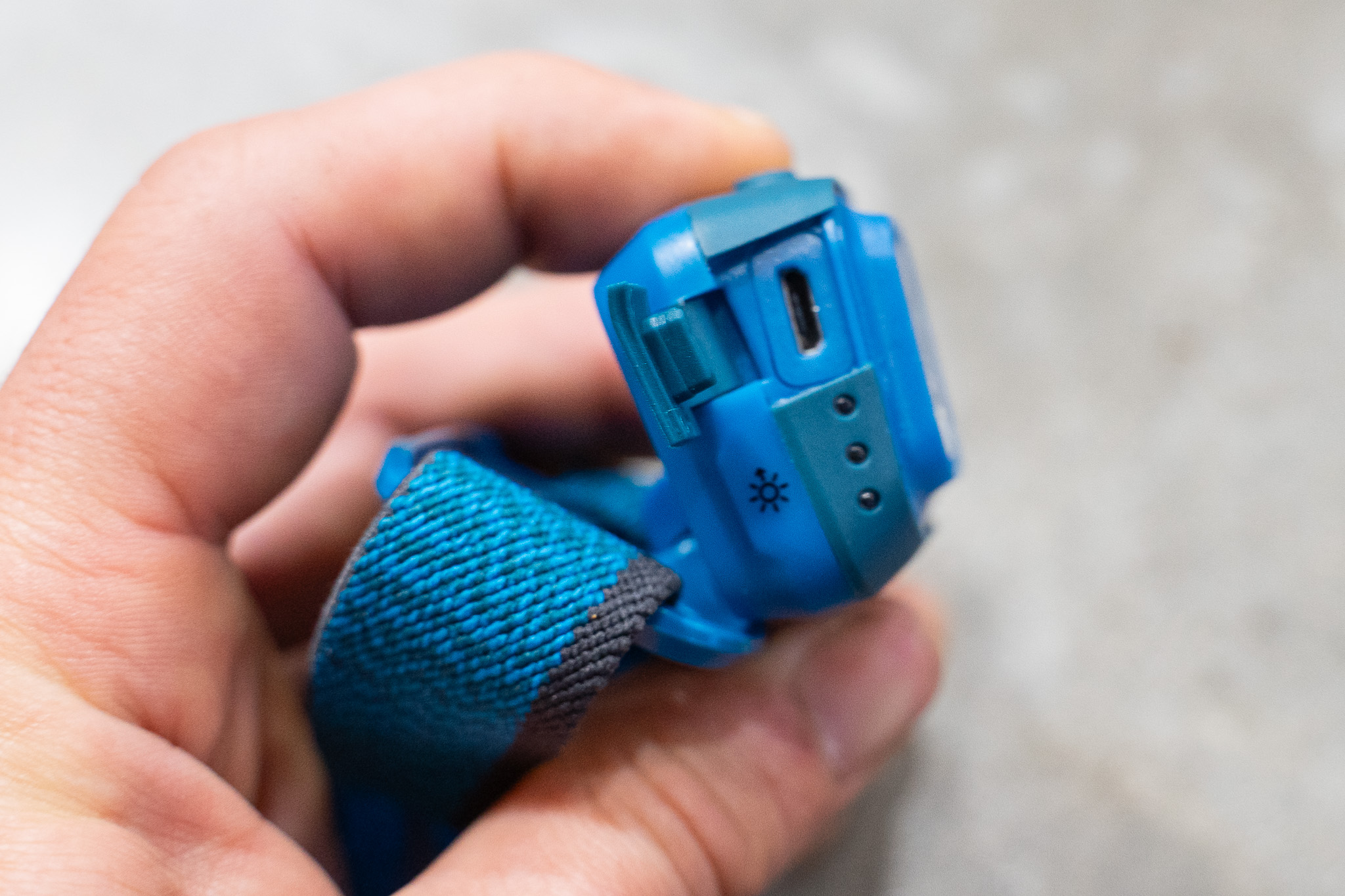
Battery Life
One of the biggest differentiators between headlamps is battery life. The best headlamps have a long life between charges, with some able to run for days on end without recharging.
But a little education goes a long way when it comes to extending battery life. By using the lower power settings and red light, most headlamps will run for many hours.
Some of the best on this list will run for more than 200 hours on low between charges! But using high will suck battery fast. For example, the Petzl Bindi Ultralight Headlamp battery lasts 2 hours in high-output mode and 50 hours in low-output mode.
Before you head out, make sure you understand how to toggle between the modes in order to manage the headlamp’s battery power.
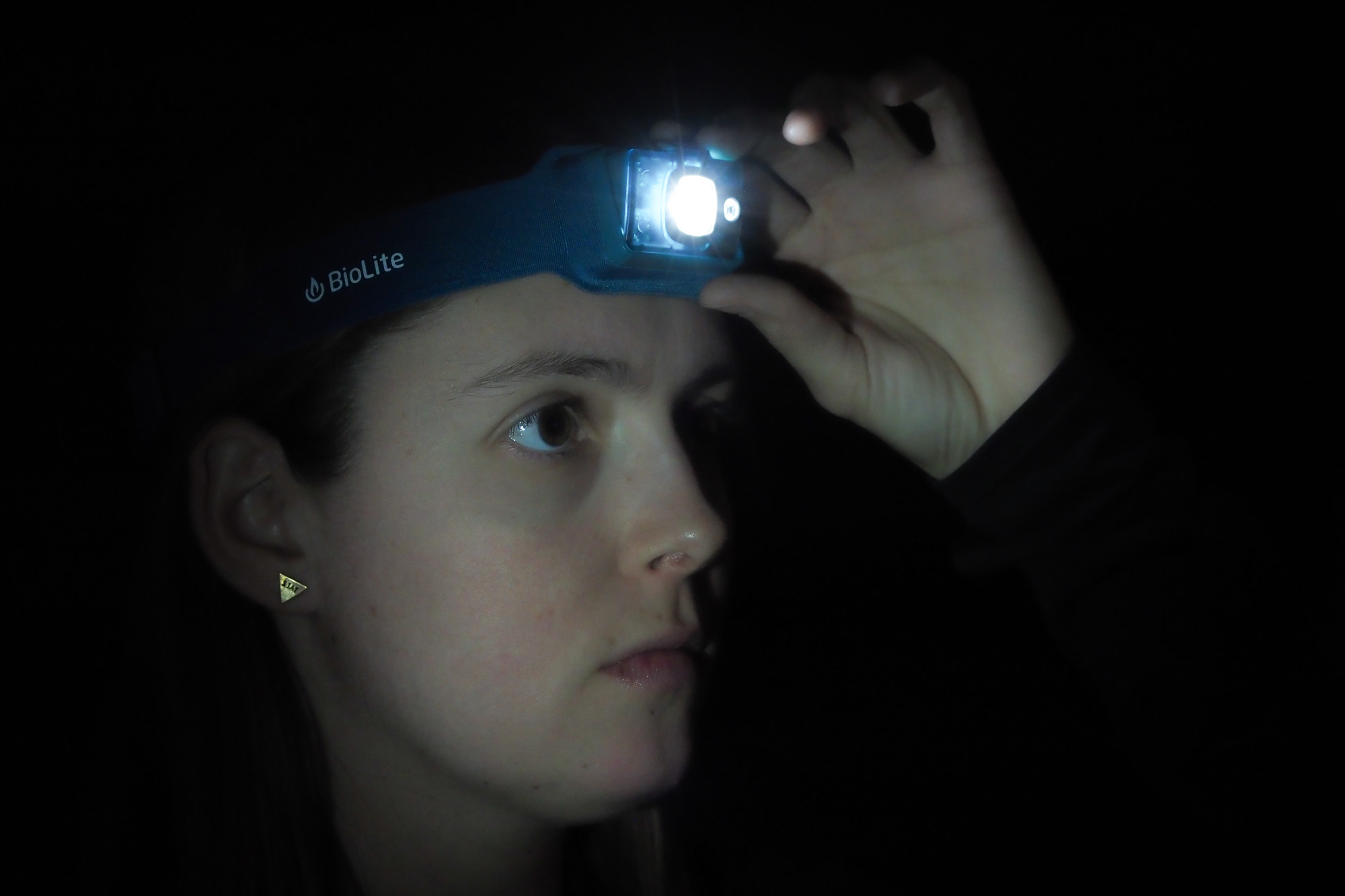
User Interface and Buttons
This is a sticking point for a few folks on the crew. One editor wanted a headlamp that could easily be used with gloves.
Some headlamps offer the ability for the user to program buttons and lighting on their own. As we said earlier, a few headlamps offer apps for a plethora of options.
But, for the great majority of headlamp users, that is really unnecessary and a time-consuming step. Our editors and testers all loved headlamps that were simple to use and didn’t require a steep learning curve.
It’s easy enough to take a few minutes to read the instructions and figure out how to use your headlamp. But for most headlamps, they’re intuitive enough to figure out right out of the box. Those are the headlamps that made our list this year — simply because they offer the least trouble.
Lockability
Most headlamps offer a lock button or switch that prevents them from turning on in your pack and wasting precious battery life (or starting a fire). If you plan to frequently store your headlamp in a bag or backpack, especially while hiking, lockability greatly improves reliability.
On this list, the Black Diamond Spot 400-r is a high-end headlamp with a well-made lock button. When you buy a headlamp, read the instructions to learn how to lock and unlock the light. It’s a valuable feature that will save you an unexpectedly dead headlamp when night falls.
Headband & Adaptability
Headlamps usually sit around the head against the forehead and hair. They typically include one front-facing LED attached to a stretchy elastic strap that’s wide, moisture-wicking, adjustable, and comfortable. The LED slides along the band and is removable, allowing the band to be washed.
There are uncommon headlamp designs, too. For instance, the LED light can be integrated into the band, like on the BioLite 330. Sometimes, a second strap crosses over the top of the head to support a heavier headlamp.
For minimalists, the Petzl Bindi Ultralight Headlamp is constructed with a thin, adjustable drawstring cord.
And other headlamps have a second light or the battery pack on the back of the strap. If you need to wear a hat or helmet, the headlamp will need to fit around that layer.

Headlamp Tilt
Some LED units are adjustable and click up and down to angle the light in an appropriate direction. This feature can be really nice in social settings when you’re trying not to blind another person or when reading a book.
It also reduces neck fatigue if you can angle the light down at the right angle to illuminate the trail without craning your neck. Just don’t be surprised if your baseball hat brim blocks the light, so pro tip; flip your baseball hat backward when wearing a headlamp at night to get the best performance.
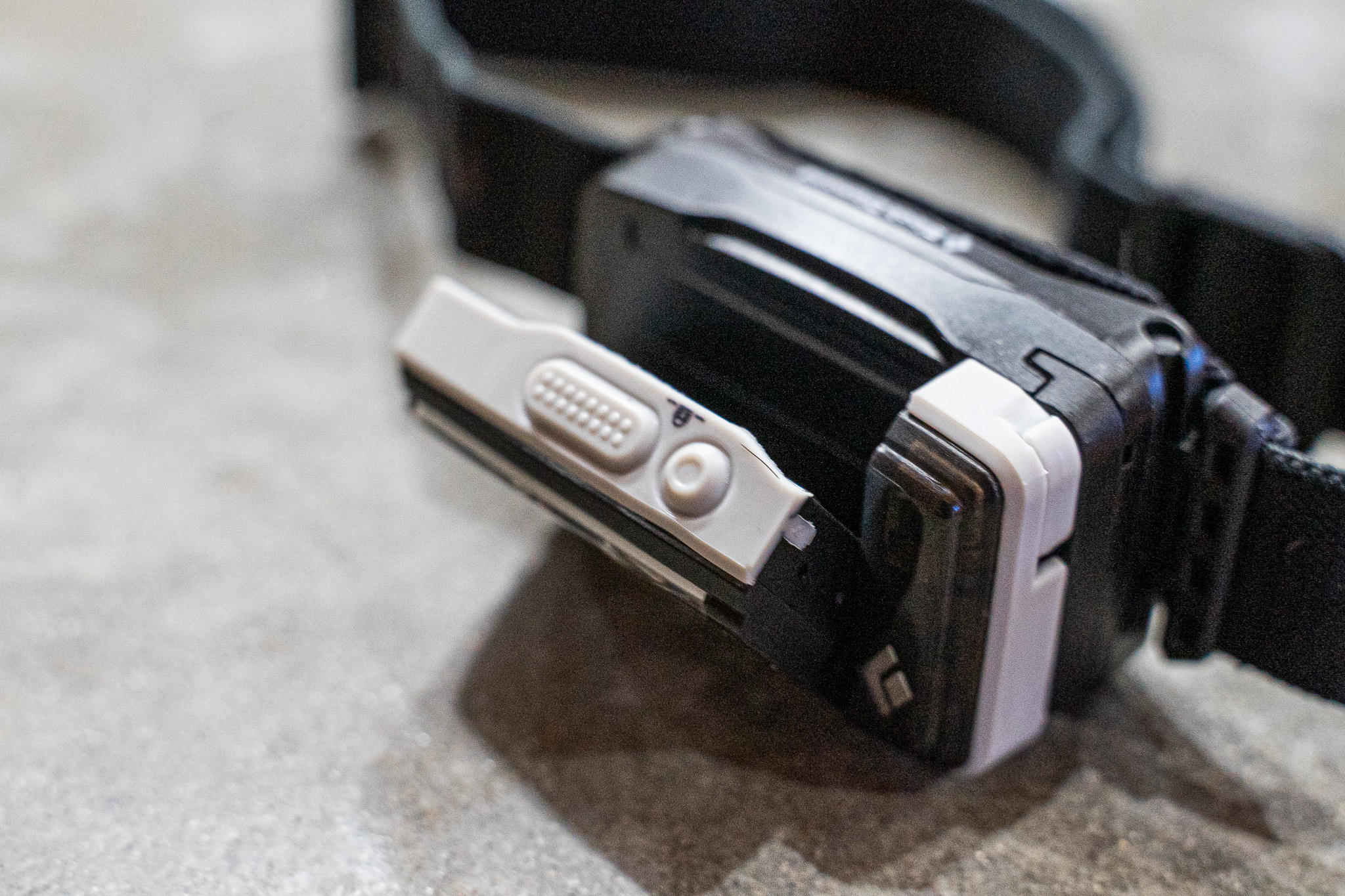
Weight
For us, comfort and a lack of bounce are key. Headlamp comfort is influenced by the type of band, adjustability, overall weight, and personal preference.
We’ve found bounce can occur with bulky or cheaply constructed designs that are less streamlined and ergonomic. The weights of our favorite headlamps range from 1.2 to 7 ounces. But heavier headlamps usually need a third strap that goes over the top of your head to ensure comfort for the user.
Water Resistance
Some headlamps have an IPX or IP rating to show how resistant they are to water. IPX0 offers no barrier at all against precipitation, splashes, or sweat. IPX8 provides the greatest amount of protection against full submersion, like if you’re swimming with a headlamp on.
For instance, the Coast FL85R has an IPX4-rated construction, which is sweatproof but not fully waterproof. The Fenix HM 50R V2 has an IP68 rating, meaning it can function while completely submerged up to a meter.
Price & Value
Headlamps span a big price range — from $25 to $200. Quality choices can be found at both ends of the spectrum, and if you just need a headlamp to see around camp or keep in your car for emergencies, our budget pick will easily suffice.
If you want to run or climb at night and are willing to spend a little bit more, you get some pretty cool features like rechargeable batteries, reactive light settings, and enough power to blind anyone headed in your direction.
Budget
If your budget is sub-$50, the Petzl Tikkina ($25) is a capable little headlamp for tooling around camp or working under the hood or under the sink. It runs on AAA batteries and emits a respectable 250 lumens (when the batteries are fresh). Spend $60, and you can upgrade to the BioLite Dash 450, the least expensive headlamp with rechargeable batteries in our guide. It’s also really comfortable to wear while running.
Mid-Tier
Spending $60 to $100 broadens your choices by quite a lot, and almost every headlamp in this price tier has rechargeable batteries. Our top pick is the Black Diamond Spot 400-R ($65), a 400-lumen light with a USB-C port for charging.
If you’re hiking on trail or running along the road at night, it’s plenty bright. The Petzl Actik Core ($69) has a 130-hour runtime on its lowest setting and only weighs 2.6 ounces, so it’s a great option for backpacking.
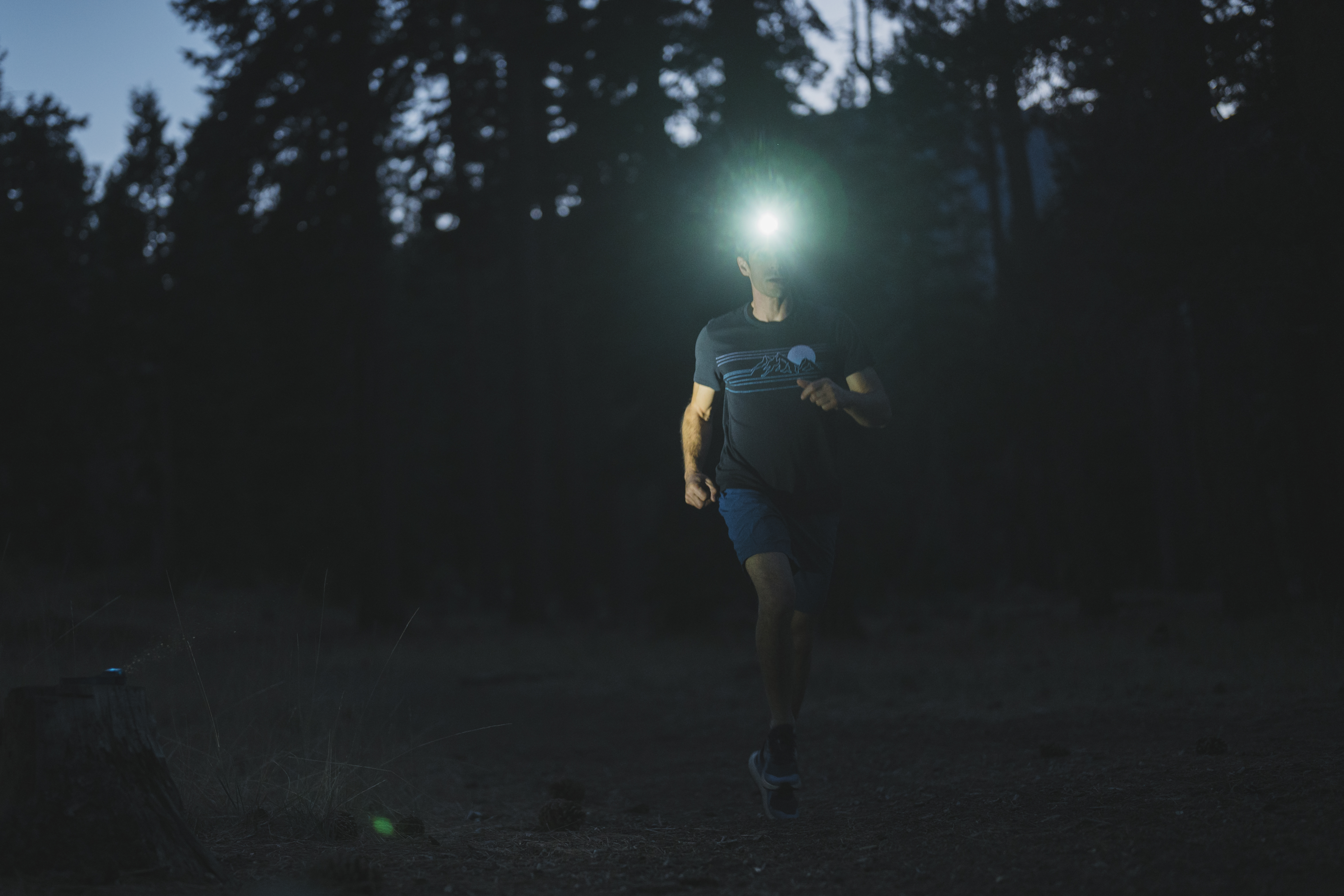
Premium
$150 and up will get you a high-powered light cannon that attaches to your forehead. The $200 Black Diamond Distance 1500 takes the cake here, with a (you guessed it) maximum output of 1,500 lumens, an 8-hour runtime at the 300-lumen setting, and rechargeable batteries that can be swapped out mid-race — awesome for ultrarunners, but overkill for most folks. The Fenix HM75R ($220) is the brightest headlamp we’ve tested. With an IPX8 waterproof rating, it’s a great choice for professional applications.
Red Flags & Buyer Beware
There are literally thousands of headlamps on the market, especially on digital retail spaces like Amazon. While many are legit, be aware of things that seem too good to be true. They usually are. There are a few red flags to keep in mind when shopping for headlamps. These types of claims are often unverifiable and often untrue.
- Inflated lumen ratings — if a $30 headlamp claims 1,500 lumens, be skeptical.
- Ultra-long run times — often true only in ultra-low output modes as low as one lumen.
- Proprietary cables — lose the cable and your headlamp becomes impossible to charge.
- No spare parts or warranty — check support before buying. Reputable brands will stand behind their products.
Frequently Asked Questions
A headlamp is an ideal tool for hands-on activities such as cooking in low light or pitch black. It’s also great for nighttime endurance sports like trail running.
We’ve used our headlamp for search-and-rescue scenarios, alpine starts for long hikes, backpacking, and even walking home in the dark. And of course, headlamps are great for projects around the house like auto repair or electrical wiring in a house.
First, decide what you’ll use your headlamp to accomplish. If you need to move through terrain with obstacles or wildlife, you’ll need more lumens — at least 300. If you’re a hunter or angler, you might want blue and green LED options.
Choose a design with a band that’s comfortable for your personal needs, including your head, skin, and hair. If you’re bouncing around or running, you might want a headlamp with a top strap.
Also, consider whether the battery duration is a match for your field hours. If not, you’ll need to decide if you want to carry extra batteries or a portable power bank to recharge the headlamp.
The brightest headlamp in our guide is the Ledlenser MH11 with 750 lumens. Other headlamps are even stronger. The Ledlenser MH11 delivers up to 1,000 lumens.
That said, headlamps with big-time lumens can require you to carry a separate battery case. They can also be clunky and less comfortable to wear on the head, especially during high-movement activities.
If we’re talking about lumens, our favorite bright headlamp is the Fenix HM75R . The design boasts 1,600 lumens, and the battery lasts 234 hours on its low setting and 10.5 hours in high-output mode.
The amount of lumens you need in your headlamp depends on the use. We’ve found 200 lumens or less work fine for domestic tasks like pulling gear out of the storage area, loading the truck bed, or setting up at the campground.
If we need to travel through technical terrain, like trail running at night, we opt for at least 250-300 lumens. For spotting distant objects, look for at least 400 lumens with a spotlight mode.
The tags on our choice headlamps range from $20 to $180. The cost is related to the components like the quantity and types of LEDs. The sturdiness, weight, battery, lumens, and power are all price variables, too.
Personally, we’d rather invest in one headlamp with the features we want, even if it’s a bit more expensive. Headlamps can last for years, as long as they’re not repeatedly dropped, crushed, or knocked off the side of a boat.
Yes, we use the red light setting of our headlamps all the time! Most modern headlamps come with a red light setting. While red light settings cannot generate the brightness of the primary white light setting, they are extremely handy.
In social settings, red lights offer visibility without blinding your friends with overly intense brightness. Plus, they help you maintain your night vision while illuminating nearby objects.
When sharing a tent with other people, a red light is great for reading without lighting up the whole interior while others are trying to sleep. Additionally, red lights are less likely to attract mosquitos and other bugs.
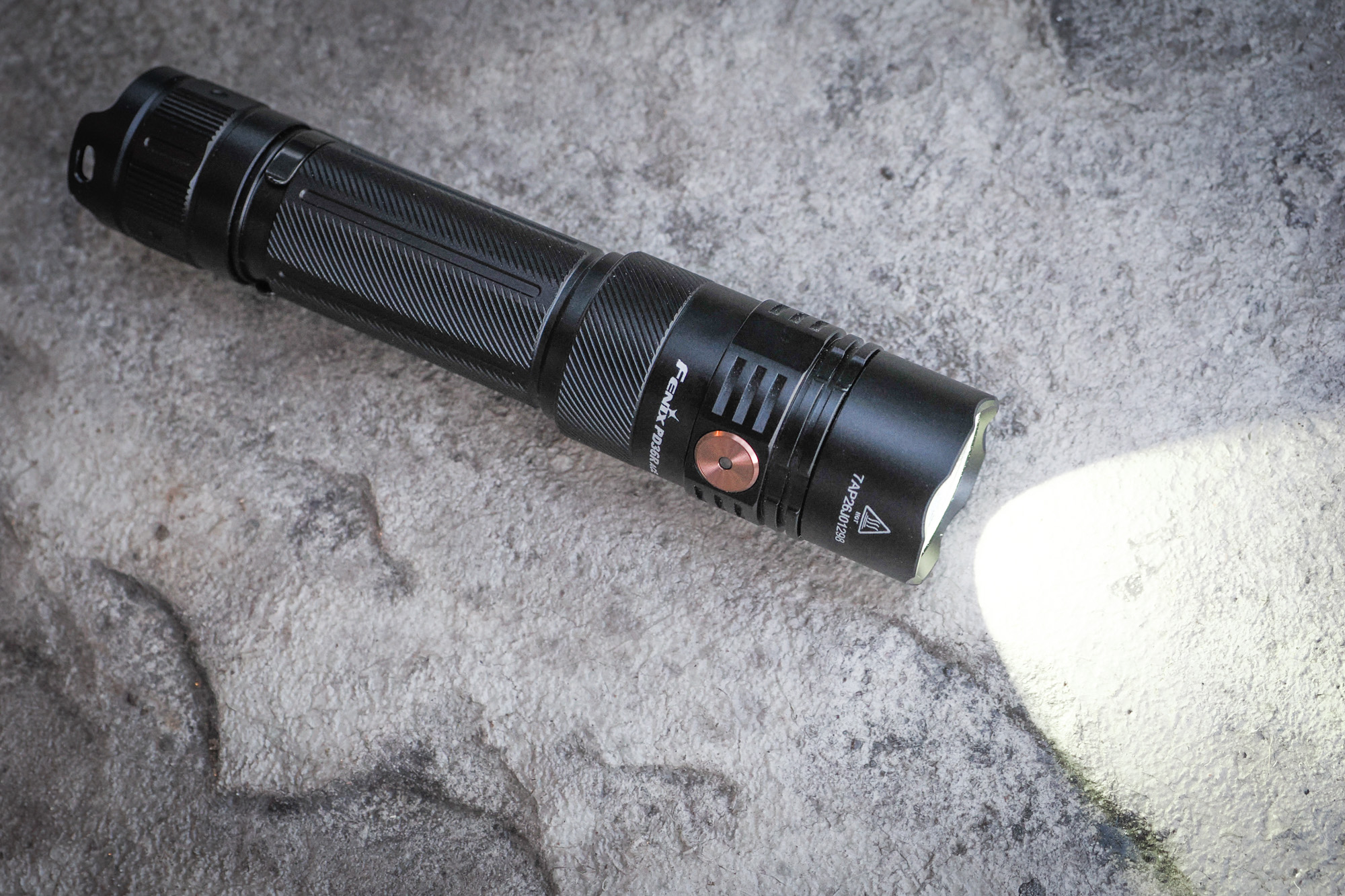
The Best Flashlights of 2025
We tested the best flashlights for 2024 with options for every budget. Top picks include Fenix, ThruNite, and more!

The Best Camping Lanterns of 2026
Whether heading into the backcountry or lighting up the night while car camping, we’ve found the best camping lanterns for every use and budget. Check out our top picks from BioLite, Goal Zero, Fenix, and more.

